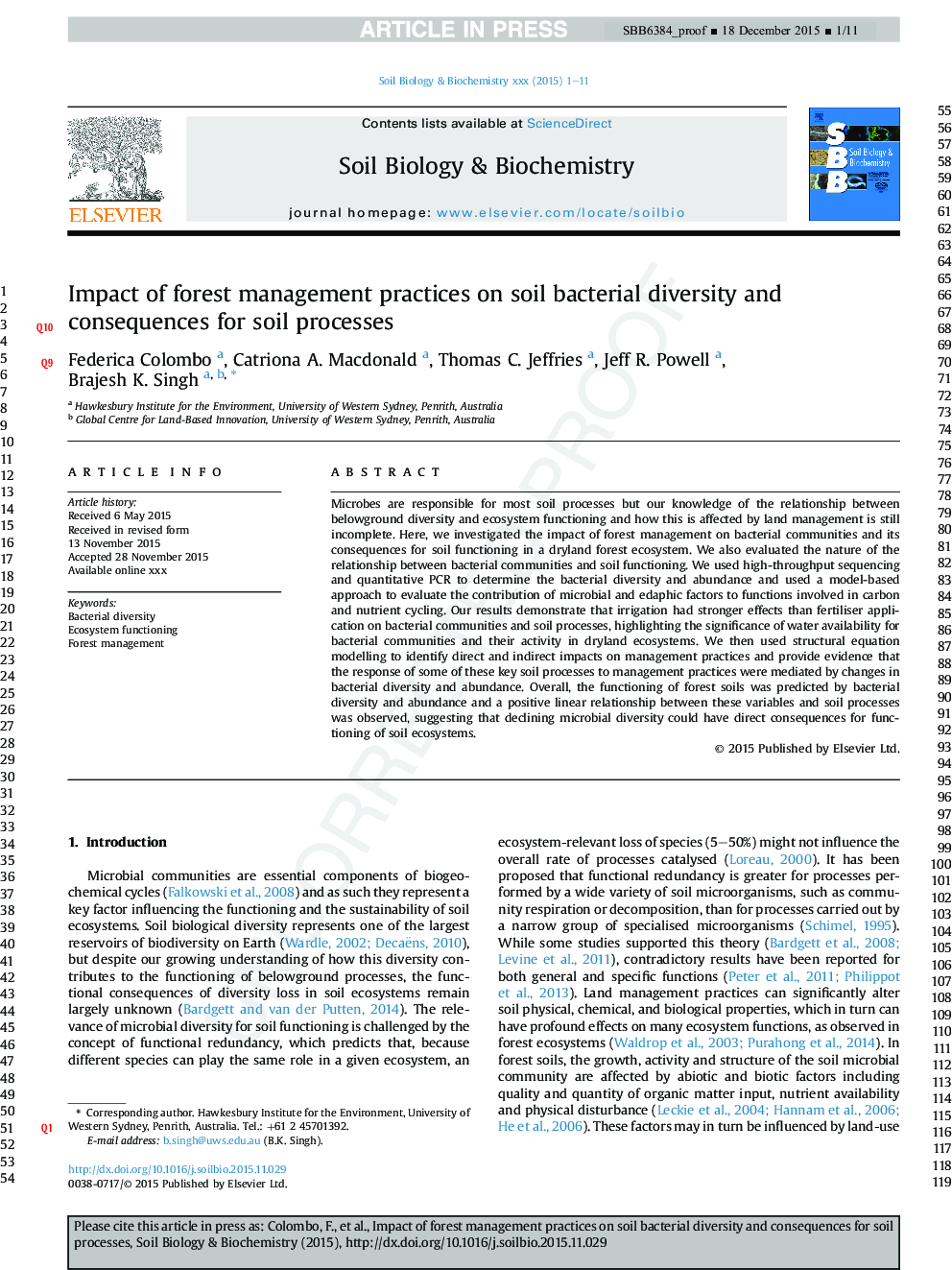| Article ID | Journal | Published Year | Pages | File Type |
|---|---|---|---|---|
| 8363626 | Soil Biology and Biochemistry | 2016 | 11 Pages |
Abstract
Microbes are responsible for most soil processes but our knowledge of the relationship between belowground diversity and ecosystem functioning and how this is affected by land management is still incomplete. Here, we investigated the impact of forest management on bacterial communities and its consequences for soil functioning in a dryland forest ecosystem. We also evaluated the nature of the relationship between bacterial communities and soil functioning. We used high-throughput sequencing and quantitative PCR to determine the bacterial diversity and abundance and used a model-based approach to evaluate the contribution of microbial and edaphic factors to functions involved in carbon and nutrient cycling. Our results demonstrate that irrigation had stronger effects than fertiliser application on bacterial communities and soil processes, highlighting the significance of water availability for bacterial communities and their activity in dryland ecosystems. We then used structural equation modelling to identify direct and indirect impacts on management practices and provide evidence that the response of some of these key soil processes to management practices were mediated by changes in bacterial diversity and abundance. Overall, the functioning of forest soils was predicted by bacterial diversity and abundance and a positive linear relationship between these variables and soil processes was observed, suggesting that declining microbial diversity could have direct consequences for functioning of soil ecosystems.
Related Topics
Life Sciences
Agricultural and Biological Sciences
Soil Science
Authors
Federica Colombo, Catriona A. Macdonald, Thomas C. Jeffries, Jeff R. Powell, Brajesh K. Singh,
